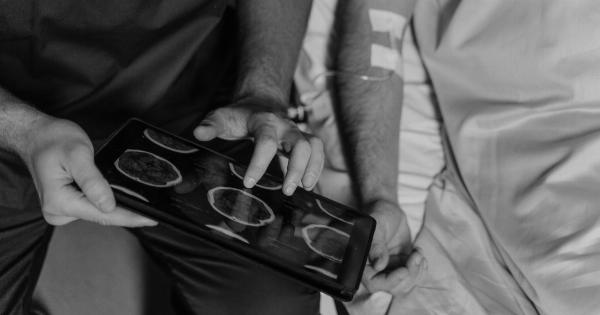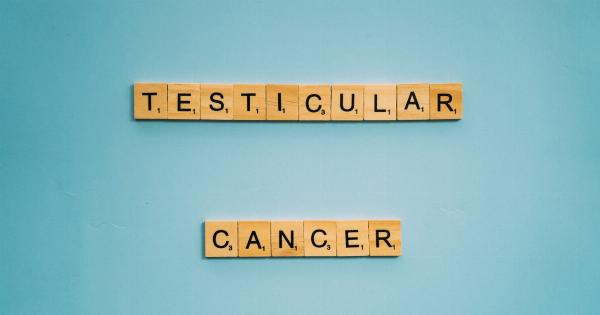A stroke occurs when blood flow to the brain is disrupted, depriving brain cells of oxygen and nutrients. It is a life-threatening medical emergency that requires immediate intervention.
While strokes can affect both men and women, certain factors, such as age and lifestyle choices, can make men more susceptible to this condition. Therefore, it is crucial to familiarize oneself with the signs and symptoms of a stroke in men in order to swiftly recognize and respond to any potential emergencies.
What Causes a Stroke?
There are two major types of stroke: ischemic and hemorrhagic. Ischemic strokes occur when a blood clot blocks a blood vessel supplying the brain, whereas hemorrhagic strokes are caused by bleeding in the brain.
Several risk factors increase the likelihood of strokes in men:.
High Blood Pressure
Men with high blood pressure are more prone to strokes. Regular monitoring, lifestyle modifications, and medication can help manage blood pressure levels and reduce the risk of stroke.
Heart Disease
Coronary artery disease, atrial fibrillation (irregular heart rhythm), heart failure, and other heart conditions increase the risk of stroke. Treating underlying heart conditions and making healthy lifestyle choices can mitigate this risk.
Smoking and Tobacco Use
Men who smoke or use tobacco products have an elevated risk of stroke. Quitting smoking and avoiding secondhand smoke can significantly reduce this risk.
High Cholesterol
Elevated levels of cholesterol can lead to the formation of fatty deposits in the blood vessels, narrowing them and increasing the risk of stroke. A healthy diet, regular exercise, and medications can help manage cholesterol levels.
Diabetes
Uncontrolled diabetes damages blood vessels and increases the likelihood of stroke.
Maintaining optimal blood sugar levels, following a healthy diet, exercising regularly, and taking prescribed medication are essential in managing diabetes and reducing the risk of stroke.
Obesity
Being overweight or obese increases the risk of stroke. Maintaining a healthy weight through a balanced diet and regular physical activity is crucial in stroke prevention.
Warning Signs of a Stroke in Men
Recognizing the early signs of a stroke can make a significant difference in the outcome. The following symptoms may indicate a stroke:.
1. Sudden Numbness or Weakness
One side of the face, arm, or leg may become suddenly numb or weak. Difficulty with coordination and balance can also occur.
2. Confusion or Trouble Speaking
Speech difficulties, such as slurred speech or difficulty finding the right words, may indicate a stroke.
3. Vision Problems
Sudden blurred or blackened vision, or difficulty seeing in one or both eyes, can be a sign of a stroke.
4. Severe Headaches
A sudden, severe headache, often described as the “worst headache of one’s life,” can occur during a stroke.
5. Dizziness or Loss of Balance
Feeling dizzy, unsteady, or experiencing a sudden loss of balance may be indicative of a stroke.
What to Do If You Suspect a Stroke
Time is of the essence when it comes to treating a stroke. If you suspect that you or someone else is having a stroke, you should:.
1. Call Emergency Services
Dial your local emergency number immediately. Inform the operator that you suspect a stroke so that appropriate medical help can be dispatched promptly.
2. Take Note of the Time
It is important to remember when the first symptoms appeared, as certain treatments are time-sensitive and need to be administered within a specific window.
3. Do Not Drive Yourself
Avoid driving yourself to the hospital if you suspect a stroke. Emergency medical services can provide swift transportation and essential medical support.
4. Stay Calm and Comfortable
While waiting for medical assistance, keep the individual calm and comfortable. Help them lie down on their side with a pillow for support.
Stroke Prevention
Prevention is key when it comes to strokes. While some risk factors, such as age and family history, cannot be changed, adopting a healthy lifestyle can significantly reduce the risk of stroke:.
1. Regular Exercise
Engaging in physical activity for at least 30 minutes a day can help control blood pressure, maintain a healthy weight, and reduce the risk of stroke.
2. Balanced Diet
Eating a diet rich in fruits, vegetables, whole grains, lean proteins, and healthy fats can support cardiovascular health and reduce the risk of stroke.
3. Limit Alcohol Consumption
Excessive alcohol consumption can increase blood pressure and the risk of stroke. Moderation is key.
4. Avoid Tobacco
Quitting smoking and avoiding tobacco products can significantly reduce the risk of stroke and various other health complications.
5. Manage Chronic Conditions
Effectively managing chronic conditions such as high blood pressure, diabetes, and high cholesterol can considerably lower the risk of stroke.
Conclusion
Strokes are a dangerous medical condition that can have devastating consequences if not promptly addressed. While strokes can affect both men and women, certain risk factors make men more susceptible.
Recognizing the warning signs of a stroke in men and knowing how to respond is vital in improving outcomes. By adopting a healthy lifestyle and addressing underlying health conditions, men can significantly reduce their risk of stroke and protect their overall well-being.































